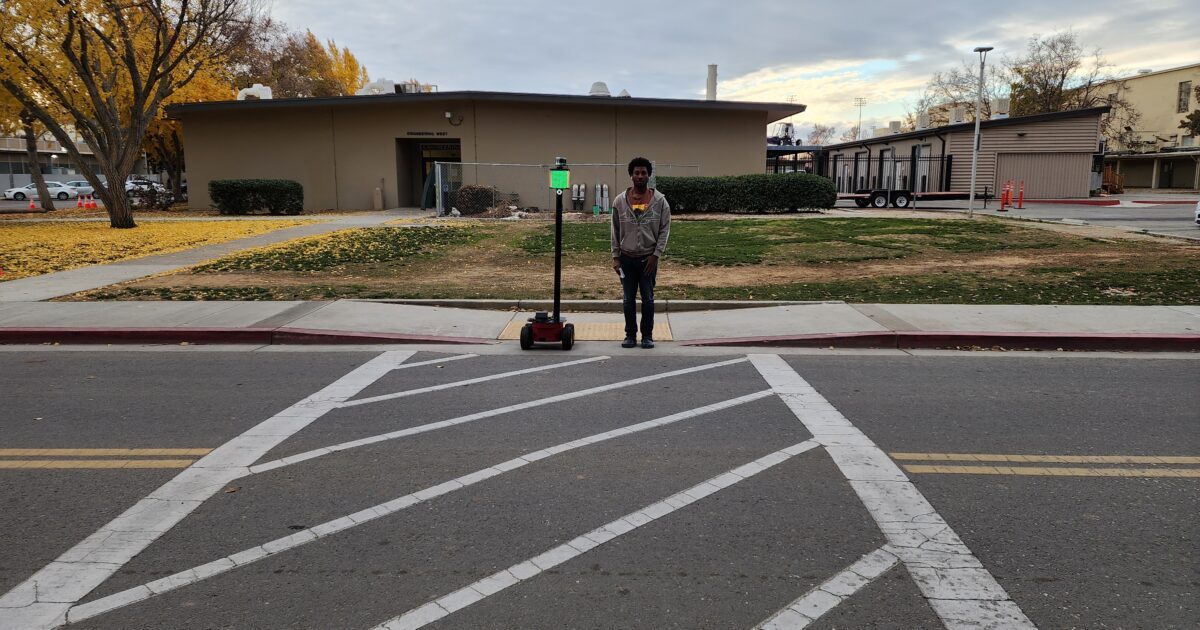Philbrick: The future of pedestrian safety

On the corner, waiting at the white-lined crosswalk just a block from school, children line up to look both ways and be escorted across the busy intersection by a crossing guard.
Dressed in neon yellow or orange, crossing guards were once familiar faces, but many school districts across the country struggle to hire and retain crossing guards. That leaves already overburdened teachers to fill this role — or leaving children and their families to fend for themselves.
San Jose and the rest of the Bay Area desperately need more crossing guards because so many of them have been priced out of the area. But with recent rapid advancements in artificial intelligence, machine learning and more, is the future of pedestrian safety about to take a high-tech turn?
Each year in the United States, approximately 6,000 pedestrians and 850 bicyclists die. Many more are injured in road collisions — tragedies that are largely preventable. These numbers hit close to home: in 2022, San Jose experienced its highest rate of traffic fatalities in recent history, with 65 deaths and even more injuries. Despite advancements in tech and increased efforts to improve safety, these rates have generally been on the rise. Pedestrian and cyclist deaths account for 19% of all traffic fatalities. The danger is especially high on high-capacity urban roads with average speed limits of 45-55 miles per hour.
This alarming trend highlights a critical design flaw: the conflict between creating walkable access to urban destinations, and maintaining roadways that prioritize vehicle speed. It’s a challenge that calls for innovative solutions — ones that could integrate the latest technology and smarter planning to make streets safer for everyone.
A researcher with the Mineta Transportation Institute is working on a patent for one effective step in the right direction: a robot crossguard. Specifically, Hovannes Kulhandjian was inspired to develop his Crossbot when taking his two young daughters to school. Unlike some other pedestrian safety systems that depend on traffic lights, the Crossbot uses advanced machine learning algorithms to accurately detect both vehicles and pedestrians at intersections.
Accidents, including pedestrian-related car crashes, are the second-leading cause of death for children under 14, according to the U.S. Centers for Disease Control and Prevention. But people of all ages face dangers walking and cycling on our roads. Risk factors for collisions include vehicle size and speed — larger vehicles and faster speeds are more fatal — distracted driving and alcohol. In 2021, 49% of fatal pedestrian crashes involved alcohol when it came to the driver, pedestrian or both.
A variety of infrastructure and education initiatives are in progress around the country to improve pedestrian safety. These include the implementation of raised sidewalks and crosswalks, pedestrian islands that allow a midpoint stop in a roadway, crosswalk visibility enhancements such as increased signage, as well as road diets where the number and/or width of vehicle travel lanes is reduced for improved safety.
Simple technologies have already proven to increase safety, such as the use of pedestrian-activated rectangular rapid flashing beacons to increase visibility and driver awareness and leading pedestrian intervals to give people walking and cycling a head start.
At the heart of the issue is that our nation has historically built roads for cars, not humans. Many drivers make the mistake of relying on their headlights and good reaction time to protect pedestrians and cyclists, but the math doesn’t add up. At 40 miles per hour, a car covers 66 feet every second, but headlights only light up about 150 feet ahead. Even with a strong 2.5-second reaction time, by the time you see someone it might be too late to stop. We need to find alternatives to protect vulnerable road users.
Technology, coupled with funding and community-led efforts, can mean significant progress in preventing more tragedies. The Vision Zero Network, which first began as a strategy in Sweden in the 1980s, has helped communities all across the U.S. to reduce traffic fatalities and injuries.
To truly create streets where children, cyclists and pedestrians of all ages can feel safe, we must keep pushing forward. By combining cutting-edge technologies, ongoing infrastructure improvements and policies that prioritize human lives over vehicle efficiency, we can move closer to a future where pedestrian fatalities are a thing of the past. Together, we can ensure that every corner, street and crosswalk becomes a place of safety.
San José Spotlight columnist Karen E. Philbrick is the executive director of the Mineta Transportation Institute, a research institute focusing on multimodal surface transportation policy and management issues.

